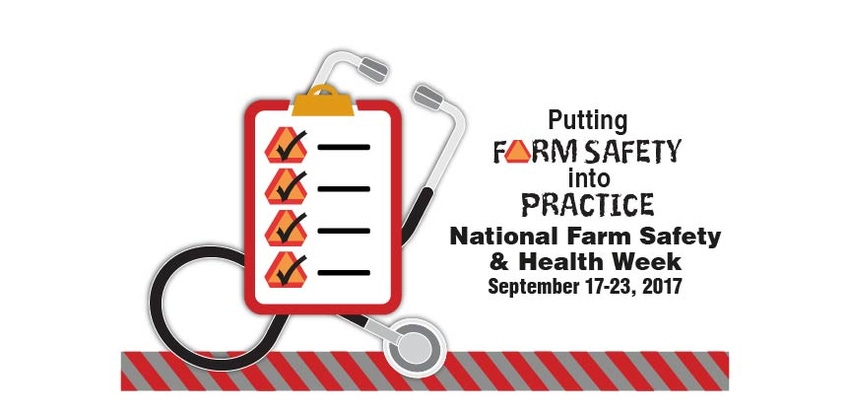
Soon we will enter full-scale fall harvest for the 2017 growing season, which makes it is a good time for farm families to review the safety procedures for their farm operation. More farm accidents occur during the fall than at any other time of the year, and usually involve one or more farm family members. Special care should be taken with children and senior citizens around farm and grain handling equipment, as these groups are the most vulnerable to farm accidents. The week of September 17-23 is National Farm Safety Week, which is intended to bring extra focus on farm safety issues and priorities during the fall harvest season.
Federal and state statistics list agriculture as one of the most dangerous professions in the United States. Farming is one of the few industries in which family members often times work and live on the same premises. This puts farm families at much higher risk for fatal and non-fatal injuries in the workplace, compared to most other professions.
Based on recent USDA data, it is estimated that there are over 1.6 million full-time workers in production agriculture on U.S. farms. In 2014, it was estimated that nearly 900,000 youth under 20 years of age were residing on farms, and that over half of the youth residing on farms performed some type of farm work. In addition, there were approximately 265,000 non-resident youth hired to work on farms in 2014, and nearly 24,000 youth that visited farms that year.
While the overall rate of farm injuries has declined in recent years, the farm accident rate for youth living on farms has held steady, and even increased slightly for youth 10-19 years old. In 2014, nearly 7,500 youth living on farms were injured on the farm; however, 60% of those accidents occurred while the youth were not doing farm work. From 2003 to 2010, among workers 16 years of age and younger, work-related fatalities in agriculture were higher than all other non-agricultural industries combined. In addition, over 4,400 other youth were injured that were either hired to work on the farm or were visiting the farm. Vehicles were the leading source of death or injury for youth that reside and work on farms, while animals were the leading source of injury for non-farm youth workers and for youth visiting farms.
Based on recent U.S. Department of Labor statistics, there were 475 fatalities in farm-related work-related injuries in the U.S., which resulted in a fatality rate of 21.2 deaths per 100,000 workers. The rate of fatalities in the agriculture industry has declined in recent years, but still remains the highest of any industry sector, according to data from the Census of Fatal Occupational Injuries, released by the U.S. Bureau of Labor Statistics. There also continues to be a large number of traffic accidents in Minnesota and other Midwestern States that involve tractors and farm machinery.
Tractor overturns are the leading cause of death for farmers and farm workers. The most effective way to prevent tractor-related injuries and deaths is to make sure that tractors have properly installed and maintained roll-over protective structures (ROPS) in place. As recently as 2006, it was estimated that less than 60% of the approximately 4.4 million farm tractors that were in use in the U.S. were properly equipped with ROPS. It is also best not to have children riding on a tractor when the tractor will be in vulnerable positions for a rollover, or during the busy harvest season.
Research has shown that fatigue can be another major contributor to increased farm accidents, especially in the fall. Farm operators are usually in a hurry to finish harvest and follow-up tillage in a timely fashion before winter sets in, which can be especially challenging with a later-than-normal harvest season, such as will likely exist in 2017. Some ways to reduce fatigue at harvest time include getting adequate sleep, scheduling planned work breaks, eating healthy, drinking plenty of water, getting some exercise and having enough help in place.
Another big danger in the fall occurs when farmers are moving equipment or hauling grain on highways and rural roads. Farmers should always use flashing lights and slow-moving vehicle signs when travelling on roadways. The non-farm public also needs to pay extra attention when driving on rural roads during harvest season, especially before and after work or school. Farm vehicles are larger and move much slower than cars, and the Autumn sun is usually in a bad position during the times of heaviest traffic in the mornings and late afternoon on rural roads throughout the fall season. The best advice is to slow down, pay attention and stay off the cell phones while driving.
About the Author(s)
You May Also Like






